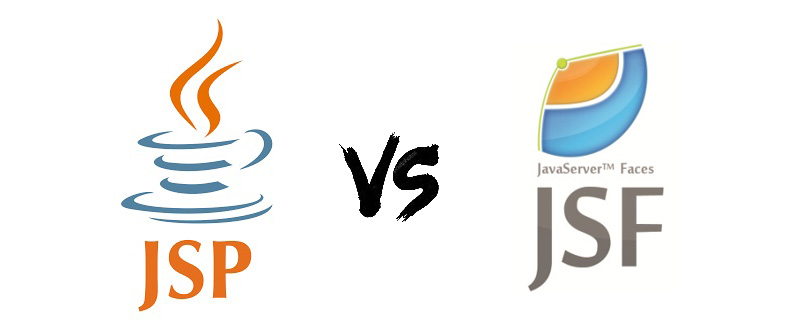
Both technologies, JSP and JSF, are based on Java and are mainly used in web-based applications. So what's the difference between them? The following article will give you a brief comparison between JSP and JSF, and introduce the differences between JSP and JSF. I hope it will be helpful to you.

What is JSP?
JSP stands for JavaServer Pages and is a technology used to create web pages that support dynamic content; developers can embed Java code into HTML pages by using specific JSP tags, This helps developers develop dynamic web pages using technologies such as HTML, XML and similar other languages.
JSP is a server-side programming technology that allows the creation of a dynamic, platform-independent approach to developing web-based applications. JSP has access to the entire family of Java APIs, including the JDBC API for accessing enterprise databases.
Web developers create JSPs as text file codes that connect HTML or XHTML, XML elements, and embedded JSP actions and commands. Using JSP, you can aggregate user input through web forms, provide records from a database or different sources, and dynamically build web pages.
JSP tags can be used for a variety of purposes, such as retrieving data from a database or registering user preferences, accessing JavaBeans components, passing control between pages, and sharing information between requests, pages, etc.
What is JSF?
JSF stands for JavaServer Faces and is a Java-based web application framework. It is designed to simplify the development and integration of web-based user interfaces and can help developers develop user interfaces for server-side applications.
JSF is an MVC web framework that explains the construction of user interfaces (UI) for server-based applications using reusable UI components in pages. It implements a functionality to connect UI widgets with data sources and server-side event handlers. The JSF specification describes a standard set of UI components and provides an application programming interface (API) for developing components.
JSF allows reuse and extension of current standard UI components. JSF reduces the workload of building and maintaining applications that will run on Java application servers and present the application UI to target customers. JSF facilitates web applications by providing reusable UI components, simple data transfer between UI components, managing UI state across various server requests, implementing custom components, and connecting client-side events to server-side application code. development. JSF provides a variety of rendering capabilities that allow JSF UI components to render themselves differently depending on the client type.
The difference between JSP and JSF
1. Goal
JSP is a Java-based technology primarily used for creating dynamic web pages for small applications. It is very difficult to use it for large-scale applications because they are developed using some kind of framework and component-based system.
However, JSF is a component-based Web application that is used to simplify the development and integration of Web-based user interfaces and is very useful for large projects; it uses the MVC framework, so even the user interface and its components are Can be reused in specific web pages.
2. Architecture
JSF is a suitable framework, which is why it is widely used in the web development industry. The technical term is component-driven UI model system. It uses XML to view view templates. FacesServlets are responsible for handling requests and sending required view templates, creating component trees, handling events, and sending responses to clients. Saves the component's state and retrieves it before creating another view.
However, JSP is a request-driven technology, which is converted into a servlet at runtime. Although it is request-driven, it can also be used with any server-side MVC designed view component instead of using it standalone. The model can be JavaBeans and the controller can be a Java Servlet.
3. Functions
JSF has various multi-core functions that do not exist in JSP. The features in JSF make it suitable for presentation-type applications, while JSP is more suitable for service-related applications. Ajax is one of the most popular UI design technologies in the world today, and only JSP is compatible with Ajax; in fact, its integration with Ajax makes it more popular than JSP. We can also integrate JSF with richfaces, which supports various UI components and multiple libraries of ajax; while JSP does not support richfaces.
Recommended video tutorials: "Java Tutorial"
The above is the entire content of this article, I hope it will be helpful to everyone's learning. For more exciting content, you can pay attention to the relevant tutorial columns of the PHP Chinese website! ! !
The above is the detailed content of What is the difference between JSP and JSF?. For more information, please follow other related articles on the PHP Chinese website!